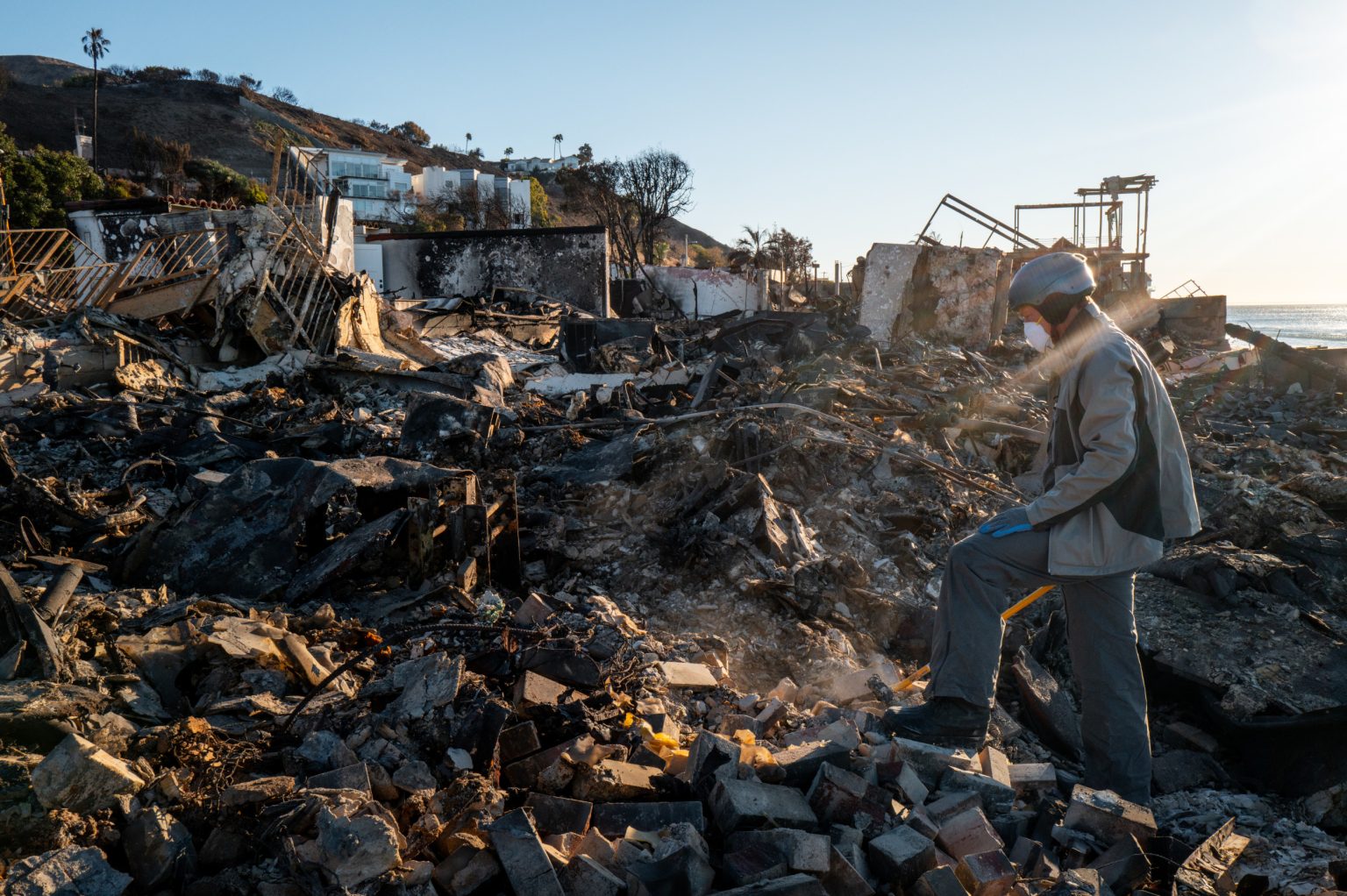Southern California is facing a critical fire emergency as strong Santa Ana winds continue to fuel the devastating wildfires that have already claimed 24 lives and destroyed thousands of structures. A red flag warning, indicating “extreme fire danger,” has been issued for Los Angeles, Ventura, and Orange Counties, signifying conditions ripe for rapid fire spread. The National Weather Service (NWS) has emphasized the severity of the situation, describing it as “about as bad as it gets,” urging residents to remain vigilant and prepared for potential evacuations. The combination of dry vegetation, low humidity, and powerful winds creates a highly combustible environment where even the smallest spark could ignite a catastrophic blaze.
Two major wildfires, the Palisades Fire and the Eaton Fire, remain active threats. The Palisades Fire, currently 14% contained, has scorched over 23,713 acres and threatens more than 12,000 structures. The cause of the fire is under investigation. The Eaton Fire spans 14,117 acres and is 33% contained. The cause of this fire is also under investigation, with nearly 40,000 structures currently threatened. The ongoing threat posed by these fires, coupled with the extreme weather conditions, underscores the urgent need for continued firefighting efforts and heightened public awareness.
The NWS has issued a “Particularly Dangerous Situation” (PDS) Red Flag Warning, the most severe level of fire weather warning, highlighting the extreme nature of the current conditions. This is the fourth such warning in the past three months, with each preceding significant fire events that resulted in widespread destruction. Governor Gavin Newsom emphasized the pattern, noting the devastation caused by the Mountain Fire, Franklin Fire, and now the Palisades and Eaton Fires, all preceded by PDS Red Flag Warnings. These warnings serve as a stark reminder of the volatile situation and the potential for rapid fire growth should a new ignition occur.
The wildfires have sparked political controversy, with former President Donald Trump calling for Governor Newsom’s resignation on social media and blaming his environmental policies for the disaster. A recall effort against Newsom has been initiated, and an online petition demanding the resignation of Los Angeles Mayor Karen Bass has gathered over 100,000 signatures. Newsom responded to Trump’s criticisms, urging him to avoid politicizing the tragedy and instead visit California to witness the devastation firsthand. This exchange highlights the political tensions surrounding the wildfires and the differing perspectives on their underlying causes and management.
While acknowledging the seriousness of the Red Flag Warnings, the NWS clarified that these warnings do not predict fire starts but rather highlight the dangerous conditions that contribute to rapid fire spread if a fire does ignite. They emphasized the importance of Governor Newsom’s message in contextualizing the current threat and urged residents to prioritize safety. The focus remains on preparedness, with evacuation plans and preventative measures crucial in mitigating the potential impact of new fires or the further spread of existing ones. The public is advised to avoid any activities that could spark a fire, including operating machinery or using equipment that generates heat or sparks.
Looking ahead, firefighters will continue their relentless efforts to contain the existing fires, while residents are urged to remain vigilant and heed the warnings issued by authorities. The “extreme fire danger” conditions are forecast to persist until Wednesday, requiring ongoing preparedness and careful monitoring of the situation. The focus remains on protecting lives and property as communities grapple with the devastating impacts of these wildfires. The long-term recovery efforts will be substantial, requiring significant resources and community support to rebuild homes, businesses, and infrastructure. The current crisis underscores the critical need for comprehensive wildfire prevention and mitigation strategies to address the increasing frequency and intensity of these events in the face of a changing climate.

